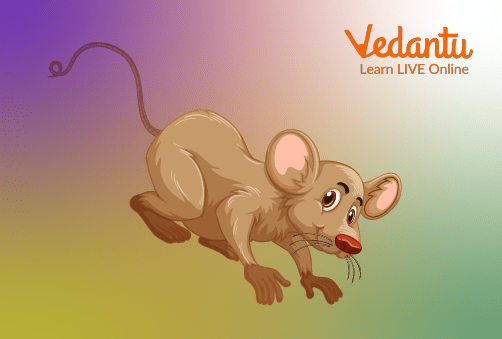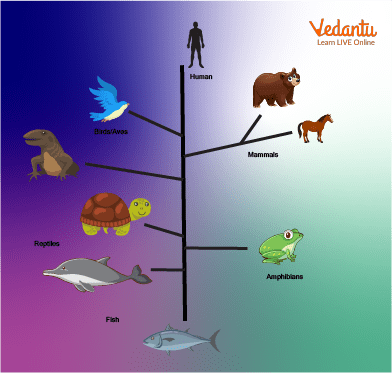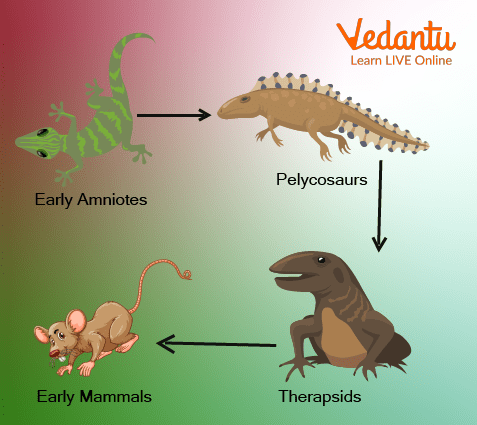




History of Evolution of Earth
Life on Earth originated roughly 4.5 billion years ago when it was formed. Scientists have used fossilised records of creatures to link and date the evolution of life. At the time, life was limited to single-celled organisms. A single-celled creature, also known as a unicellular organism, is an organism made up of only one cell, which performs all of the necessary functions for life.

First Mammals on Earth
A multicellular organism has numerous cells, meaning distinct cells specialise in performing certain functions, as in animals. Organisms with eukaryotic cells are found in the domain Eukarya; these eukaryotes are distinguished by their numerous cells containing nuclei and membrane-bound organelles. This means the cell membranes have a threshold or membrane that aids cell adhesion.
How and When Did Animals First Appear on Earth?
Animals evolved by evolution, which is the change in a species' features over multiple generations. Evolution can be triggered by:
Mutation: a change in an organism's genetic material
Migration: the movement or relocation of organisms to a different geographical area.
Natural Selection: organisms best adapted to their environment survive and pass on their genetic material to their descendants.
Genetic Drift: species features becoming more or less prevalent, as measured by allele frequency.
Non-Random Mating: species select mates based on certain characteristics.
Cells are the building blocks of life and can be prokaryotic or eukaryotic. Animalia, Plantae, Fungi, Protista, and Monera are the five kingdoms of life. Single-celled creatures, made up of prokaryotic cells, were the first to occupy Earth.
Prokaryotic means "before-nucleus," and they comprise only one of the five kingdoms, Monera, which includes both Eubacteria and Archaebacteria. The remaining four kingdoms of life are made up of multicellular organisms.
Animals, whatever their origins, may have gone onto land during the Cambrian period. Scientists previously believed that animals did not begin to colonise the land until 440 - 410 million years ago.
A Chart of the Evolution of Animals
The chart below depicts all of the different branches of animal evolution.

Chart of the Evolution of Animals
Correct Line of Evolution of Mammals
Amniotes are descendants of amphibians. They divide into two major branches after losing their reliance on water. Modern reptiles and birds would descend from one branch, while mammals would descend from the other.
The mammals' predecessors were once the dominant animals on land. However, the early mammals' hold on the land was eroded after two terrible extinction events.

Evolution of Mammals
Reptiles took over during the Triassic Period. The dinosaurs evolved into one of the most successful animal groupings the world has ever known.
However, the common ancestor of all mammals first appeared during the Triassic Period. Mammalian features were most likely formed when early mammals shared Earth with dinosaurs.
The Cretaceous-Paleogene Extinction Event marked the end of the dinosaurs and the start of the Cenozoic Era, sometimes known as the "Age of Mammals."
Some Evolution Examples in Animals
The interaction between genetic modifications and natural selection, commonly known as "survival of the fittest," is called evolution. Charles Darwin famously researched different species to see how environmental adaptations allowed them to survive. Natural selection shows a species' determination to pass on advantageous genes and how well it can use its features to thrive in its environment.
Here are some examples of species evolution and modifications across many generations.
1. The Peppered Moth: Because of the pollution of the time, this light-coloured moth grew darker following the Industrial Revolution. This mutation enabled black peppered moths to blend in with their shooty surroundings and evade predators. Most peppered moths became black instead of light, but the lighter colour was restored to the population as pollution levels dropped.
2. Peacocks in Vibrant Colours: Females always prefer the male peacock with the most vibrantly colourful feathers. Male kids have a better chance of finding a spouse and passing along their genes since the genes for brilliant features are passed down to them.
3. Birds that Cannot Fly: Birds that cannot fly include ostriches, emus, and penguins. This wasn't always the case; these flightless birds had relatives who could fly. Ostriches and emus evolved over many generations to have larger bodies and feet designed for running on the ground, leaving them without the capacity (or need) to fly. The same is true for penguins, who have traded traditional wings for swim-friendly flippers over thousands of generations.
4. Ant Warrior: These ants carry a chemical signal that allows them to identify their colony. Some ants learned to duplicate this signal from another colony to assault and take over a colony. The worker ants will not even notice the invasion and will continue to work.
Summary
Evolution is a continuous process; It has been going on for hundreds of millions of years. Animals have evolved from unicellular microorganisms to their current form through the evolution process. Many examples of animals show that the process is ongoing and is never over.
FAQs on Evolution of Animals
1. What are the four evolutionary mechanisms?
Genetic Mutation: A mutation is a genetic change that occurs randomly or as a result of environmental factors.
Genetic Drift: Genetic drift happens when a section of the population with distinct genetic features dies or moves away, resulting in the formation of two genetically distinct groups.
Mixing Genetic Pool: Mixing genetic pools of two related species to create genetic diversity
- Natural Selection: An organism's capacity to best survive its surroundings and choose an optimal mate while effectively passing down its genes.
2. When did mammals evolve on Earth?
The first human ancestors developed between five and seven million years ago, most likely when certain African apelike creatures began to walk on two legs consistently. By 2.5 million years ago, they were flaking primitive stone tools. After two million years, some moved from Africa to Asia and Europe. As recently as 30,000 years ago, there were several different species of humans, including Homo Sapiens, Homo Neanderthals, Homo Erectus, Homo Dedosovans, and others, but only Homo Sapiens survived.









